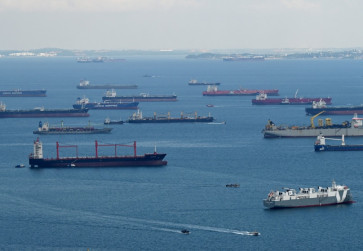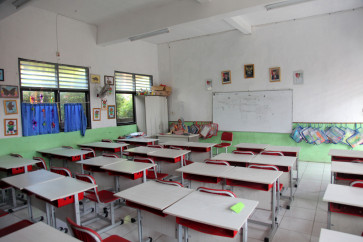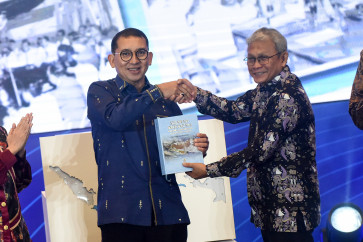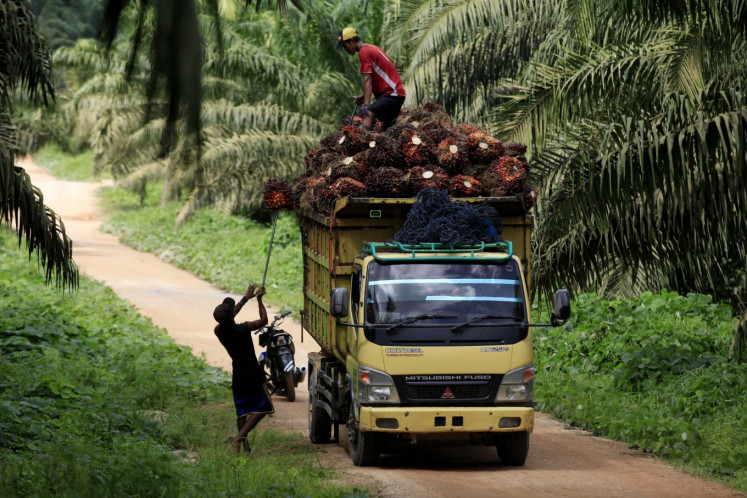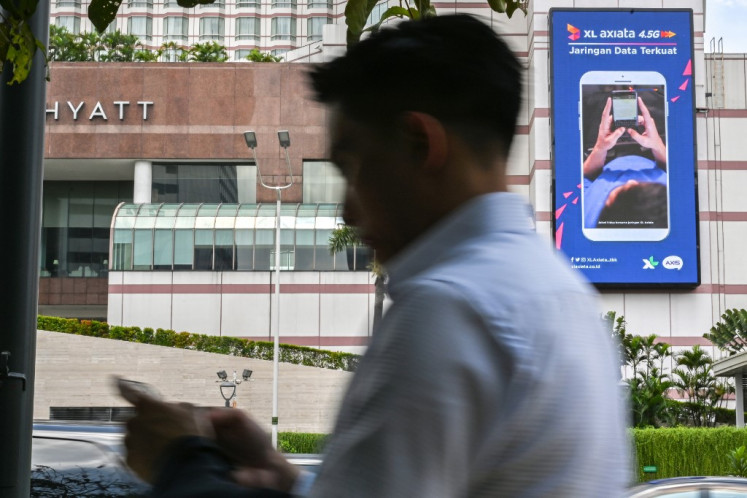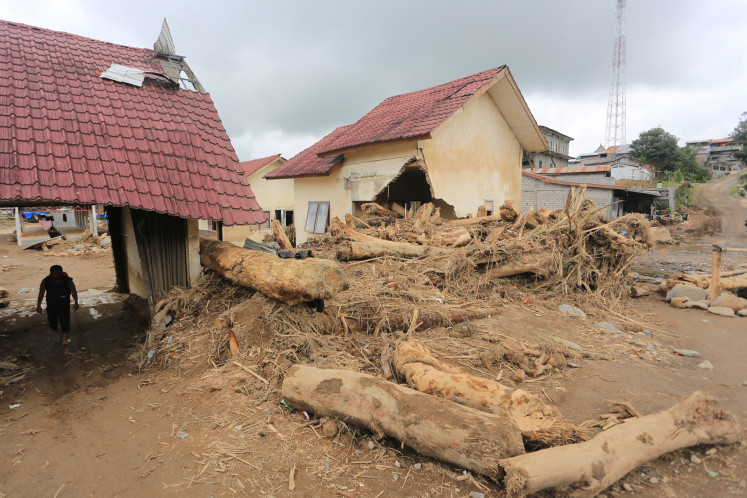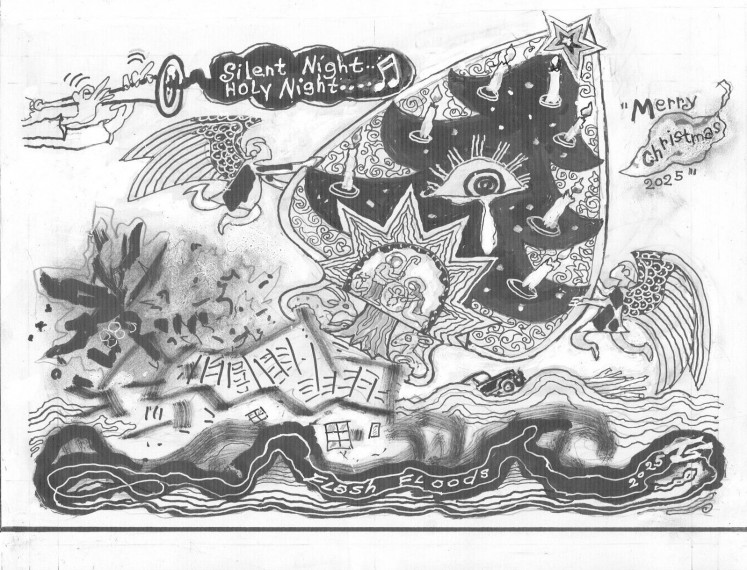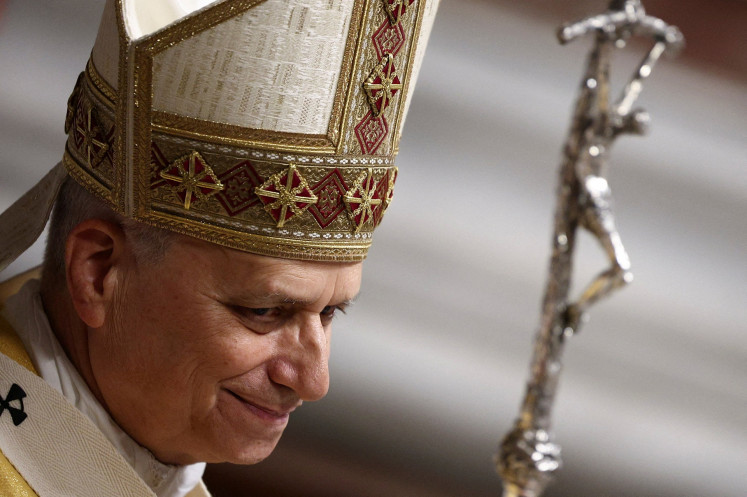Popular Reads
Top Results
Can't find what you're looking for?
View all search resultsPopular Reads
Top Results
Can't find what you're looking for?
View all search resultsCommemorating Papua Land of Peace Day
From Papua’s Land of Peace declaration we can learn about ways to make the idea of Papua as a land of peace and harmony a reality.
Change text size
Gift Premium Articles
to Anyone
O
n Feb. 5 each year in Papua, people commemorate the day the Gospel was spread in Papua and the declaration of Papua Tanah Damai (Papua as Land of Peace, or PTD). The day represents a distant hope for many people in the restive region, which is still experiencing a protracted violent conflict, where blood and tears of sorrow are shed.
We know that since being incorporated into Indonesia via a United Nations-sponsored Act of Free Choice (Penentuan Pendapat Rakyat) in 1969, the mountainous half-island of Papua has had a troubled relationship with the Indonesian government. Local opposition to the widely criticized referendum led to the emergence of the Free Papuan Organization (Organisasi Papua Merdeka, OPM) in 1965, which has led to a low-level armed insurgency over several decades. In response, the government has suppressed the separatist movement with violence.
Other causes for resentment on the part of the indigenous population include Papua’s poverty relative to other parts of the archipelago, as well as the large-scale influx of Muslim migrants that have tipped the demographic balance in some areas against the predominantly Christian Papuans.
Various efforts to comprehensively solve the Papuan problem have not yielded results. The non-security approach also fails to make a difference. Infrastructure development to improve welfare, from the reform era of 1998 until the reign of President Joko “Jokowi” Widodo, along with the implementation of special autonomy and regional expansion, have yet to ease the level of violence in the region. Recent data on violent conflicts show an upward trend, with no sign of easing. It is also worth noting that the rate of violence has escalated even after the signing of a humanitarian pause agreement in Geneva last year.
This essay looks into the origin of Papua’s Land of Peace declaration, from which we can learn about ways to make the idea of Papua as a land of peace and harmony a reality.
To understand the PTD framework holistically, it is important to understand its genesis. The PTD peace framework, which was launched on Feb. 5, 2003, did not emerge in a historical vacuum. It is rooted in the experience of Papuans who have a real desire for peace. At the outset, the indigenous Papuan youth, including students, wanted to nurture a culture of peace by promoting the idea that Papua is “a Zone of Peace”. At that time, they did not use the term PTD, or “Papua the Land of Peace”.
The initiative was broached in a meeting in Serui, Yapen Waropen, in June 1999 because Papuan people wanted peace in Papua. I contend that the violent approach by the Indonesian government during the New Order regime against Papuans, including the Biak massacre, which had happened only 11 months earlier (July 6, 1998), gave impetus for that meeting. The participants wanted to ensure their meeting was not regarded as subversive against the Indonesian government. In a ceremonial meeting, Marthen Tanawane, a Papuan tribal leader, declared Yapen Waropen as “a Zone of Peace” on Sept. 17, 2000.
In 2001, Theo van den Broek and his companions reflected on the Papua Zone of Peace concept in Jayapura. Forty organizations representing almost all government and civil-society stakeholders met to explore the philosophical aspects of the Papua Zone of Peace. At the end of the conference, the participants agreed with the slogan “Papua as a Zone of Peace”, referring to a situation in Papua where its people feel free from physical and psychological conflicts.
The notion of “Papua as a Zone of Peace” received a good response from various parties, including religious leaders in Papua. The religious leaders, including Muslims represented by MUI Papua, church leaders, Hindu and Buddhist leaders, strongly supported the notion of Papua as a Zone of Peace due to the Papuans and Indonesian migrants’ mutual desire for peace. However, in the later reflections, those religious leaders considered that the concept of Papua as a “zone” of peace might be misused or misunderstood. For instance, they considered that several regions in Papua could be categorized as peace zones, while other regions could be deemed war zones. Instead, they proposed a more accurate term, the “land of peace”.
It is useful to note that the historical and political context of the PTD declaration, especially the communal conflicts that erupted in some areas in Indonesia (such as in Ambon, Sambas, and Sampit). In 2001, a Peace Agreement was reached to resolve the conflict in Ambon, the Moluccas, causing Laskar Jihad to lose its influence. It was reported that Ja’far Umar Thalib, a commander of Laskar Jihad, had initially sought to wage jihad in Papua, taking advantage of the turmoil that had arisen because of the call for self-determination for Papua.
The PTD project aims to respond to the absence of civil and political rights (CPR) and economic, social and cultural rights (ESCR), excessive security approaches and welfare gaps in Papua. Because the concept of PTD can be interpreted differently by community organizations, it can be used to achieve different goals by different organizations.
As dialogue is key to overcoming political conflict in Papua, Neles Tebay, for instance, developed the framework of PTD through a program called “Jakarta-Papua Dialogue”, elaborating on elements of “truth and justice” under the architecture of Papua Land of Peace by promoting the idea of dialogue to make the slogan a reality.
Dialogue, for Tebay, is a way to erode the culture of violence. Tebay not only articulated his ideas through writings but also translated his ideas by establishing Papuan Peace Network (Jaringan Damai Papua, JDP) in 2010, in collaboration with the Indonesian Institute of Science (Lembaga Ilmu Pengetahuan Indonesia, LIPI) led by Muridan Widjojo.
JDP has been the architect of numerous initiatives to promote dialogue. Unfortunately, their activities are viewed by the Indonesian government as a guide for the Papuan independence movement. In an ironic twist, the OPM suspects JDP of working for the Indonesian government. As a result, suspicions about the intentions of JDP have severely undermined its efforts. In this light, Tebay noted that the Indonesian government often fell into the trap of viewing peace initiatives in Papua as part of the broader struggle for Papuan independence. On April 14, 2019, Neles Tebay died, making the future of “Jakarta-Papua Dialogue” and JDP’s mission increasingly blurred.
To conclude, PTD day should not be a ceremonial event only. There should be a political will from the warring parties to engage in a dialogue for peace and finally bring a lasting peace to the Land of Papua.


